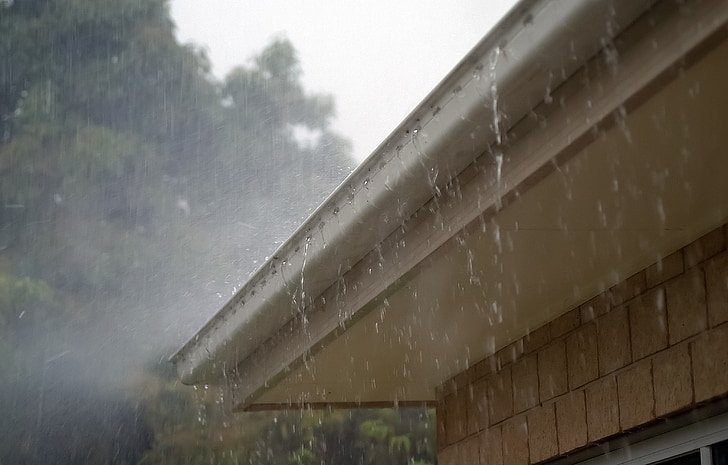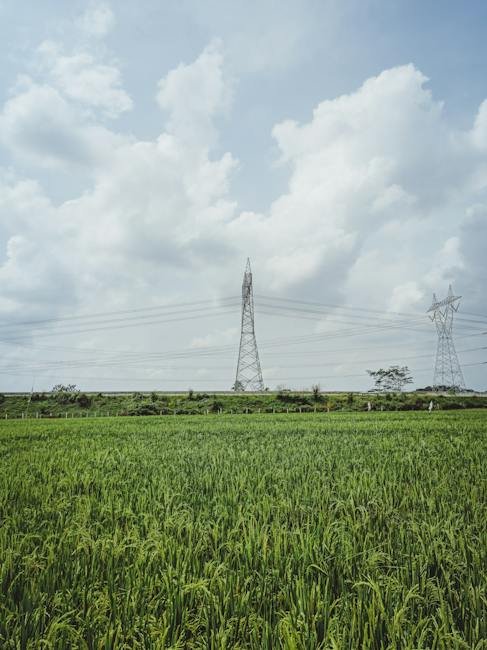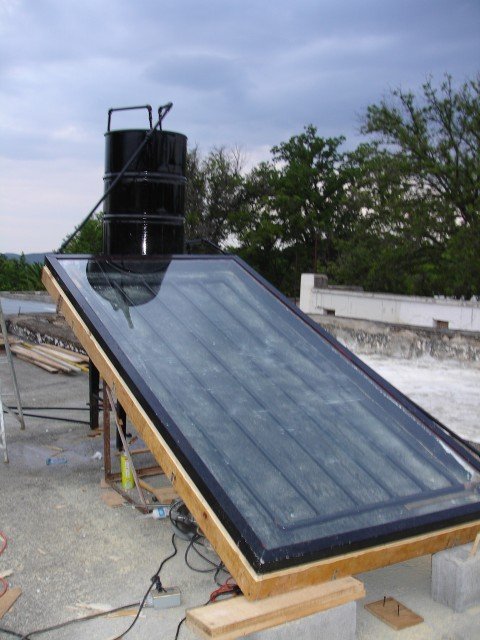Now Reading: How to Build a DIY Rainwater Collection System
-
01
How to Build a DIY Rainwater Collection System

How to Build a DIY Rainwater Collection System
Have you ever wished you could harness the power of nature and save money on your water bill at the same time? Look no further, as we unveil the secret to building your very own DIY rainwater collection system. Whether you’re an avid gardener, an eco-conscious homeowner, or simply looking to reduce your environmental footprint, this creative endeavor will empower you to capture and utilize the gift of rainfall. So, grab your tools, put on your craftsmanship hat, and get ready to embark on a journey that will not only benefit your wallet but also contribute to conserving our planet’s most precious resource – water.
Table of Contents
- Introduction: Harnessing the Power of Rainwater for a Sustainable Future
- Planning and Designing: Key Considerations for Building Your DIY Rainwater Collection System
- Materials and Tools: Essential Components for a Reliable and Efficient Rainwater Harvesting System
- Step-by-Step Construction: Building Your DIY Rainwater Collection System Like a Pro
- Maintenance and Upkeep: Ensuring Longevity and Optimal Performance of Your Rainwater Collection System
- Q&A
- Wrapping Up

Introduction: Harnessing the Power of Rainwater for a Sustainable Future
Rainwater, a gift from nature, has long been an essential resource for our planet’s survival. However, with the shift towards a more sustainable future, we have come to recognize the untapped potential that lies within its gentle droplets. Harnessing the power of rainwater has emerged as a promising solution to address pressing environmental concerns and secure a better future for generations to come.
Innovation has allowed us to channel rainwater into sustainable practices that benefit both the environment and society. By capturing and storing rainwater, we can mitigate the strain on traditional water sources, reduce reliance on energy-intensive purification methods, and decrease the overall demand for water. The possibilities are as vast as an open sky: from replenishing groundwater reserves to irrigating crops and sustaining entire communities, rainwater holds the key to shaping a more resilient and sustainable world.
As we embark on this journey to harness the power of rainwater, it is crucial to explore its immense potential and discover the various ingenious methods and technologies that allow us to capture, store, and utilize it effectively. This post section aims to delve deep into the world of rainwater harvesting, unveiling the wonders it holds and enlightening us on the transformative path towards building a greener future.

Planning and Designing: Key Considerations for Building Your DIY Rainwater Collection System
Key Considerations for Building Your DIY Rainwater Collection System
When planning and designing your own DIY rainwater collection system, there are several important factors to consider to ensure its efficiency and effectiveness. By taking these considerations into account, you can create a sustainable solution for collecting and utilizing rainwater in your home or garden.
1. Location: The placement of your rainwater collection system is crucial. Consider the proximity to your roof’s downspouts and ensure it is easily accessible for maintenance. Additionally, assess the terrain to prevent water runoff and maximize the collection efficiency.
2. Collection Area: The surface area that will be collecting rainwater should be carefully chosen. The efficiency of your system depends on the size and material of the collection area. An ideal choice is a smooth, non-porous surface such as a metal roof or plastic tarp to prevent the collection of debris.
3. Storage Capacity: Determine the appropriate storage capacity based on your usage needs and the amount of rainfall in your area. Consider installing tanks or barrels that are both durable and safe for water storage. Ensure that the capacity is sufficient during periods of drought or low rainfall.
4. Filtration and Purification: To ensure the quality of the collected rainwater, consider incorporating filtration and purification systems. This will remove debris, sediment, and contaminants, making the water safe for various applications such as gardening or even household use.
By carefully considering these key factors and incorporating them into your planning and design process, you can create a functional and sustainable rainwater collection system that reduces reliance on traditional water sources and positively impacts the environment.

Materials and Tools: Essential Components for a Reliable and Efficient Rainwater Harvesting System
Rainwater harvesting systems are becoming increasingly popular as individuals and communities strive to find sustainable solutions for water conservation. To ensure the reliability and efficiency of such systems, it is crucial to carefully select the right materials and tools. By using high-quality components, you can maximize the collection and utilization of rainwater while minimizing any potential issues or disruptions.
When it comes to materials, it’s important to consider the durability and compatibility with water. Some essential components to include are:
- Rainwater tanks: These large containers, made from polyethylene or galvanized steel, ensure proper storage and prevent contamination. Choose a tank size based on your water usage needs.
- Gutters and downspouts: These channels efficiently collect rainwater from your roof and direct it to the storage tank. Opt for corrosion-resistant materials such as aluminum or PVC to ensure longevity.
- Filters and screens: These remove debris and pollutants from the collected rainwater, preventing clogging and ensuring the water quality remains high. Consider adding a combination of mesh filters, leaf diverters, and first flush systems.
Moreover, a reliable rainwater harvesting system requires the use of appropriate tools during installation and maintenance. Some essential tools to have on hand include:
- Power drill: Necessary for installing gutters, downspouts, and brackets securely.
- Saws, cutters, and pliers: Essential for customizing gutter lengths, cutting downspouts, and making precise adjustments.
- Level and measuring tape: These tools help ensure proper alignment and positioning of gutters and downspouts.
- Sealants and adhesives: Required for sealing joints, connections, and any potential leaks, ensuring the system operates efficiently.
Investing in high-quality materials and tools will not only enhance the performance of your rainwater harvesting system, but also contribute to its longevity. Remember to regularly maintain your system, replace damaged components, and consult professionals for guidance. With a reliable and efficient rainwater harvesting system, you can contribute to water conservation efforts and reduce your dependence on external water sources.

Step-by-Step Construction: Building Your DIY Rainwater Collection System Like a Pro
Ready to become the master of water conservation? With our step-by-step guide, you can create a DIY rainwater collection system that’s fit for the pros. Say goodbye to wasteful water practices and hello to sustainable living!
Materials Needed:
- An appropriate-sized barrel or tank
- Downspout diverter or filter
- Gutter attachments
- PVC pipes and connectors
- Sealant and pipe tape
- Drill and hole saws
- Level and measuring tape
- Patio blocks or cement
- Wire mesh and gravel
- Rain Barrel Overflow Kit (optional)
Step 1: Choose the Perfect Location
Start by identifying an ideal spot for your rainwater collection system. Look for an area near a downspout where the water runoff is abundant and easily accessible. Consider installing it on stable ground to prevent shifting over time.
Step 2: Prepare the Area
Clear the selected area of debris, plants, or any objects that may interfere with the installation. Level the ground and ensure proper drainage. For stability, place patio blocks or pour a cement base where your barrel or tank will sit.
Step 3: Install the Gutter Attachments
Attach your downspout diverter or filter to the existing gutter system, ensuring a secure fit. This integral component will filter out debris and prevent clogs in your rainwater collection system.
Step 4: Connect the PVC Pipes
Measure the distance between the downspout diversion point and your rainwater collection barrel. Cut and connect your PVC pipes and connectors accordingly, using sealant and pipe tape for watertight connections.
Step 5: Create Overflows and Filters (Optional)
If desired, install a Rain Barrel Overflow Kit that will redirect excess water away from your collection system during heavy rainfall. Additionally, consider attaching wire mesh and gravel to prevent debris from entering the system.
Step 6: Test and Troubleshoot
Fill your rain barrel or tank with water and carefully inspect for any leaks or malfunctions. Make necessary adjustments or repairs as needed. Don’t forget to check local regulations and water usage restrictions.
With determination and a few basic tools, you’ll have a professionally built rainwater collection system that will help you conserve water and protect the environment. Enjoy the rewards of self-sustainability and watch your garden thrive without worrying about wasting one drop of precious water!
Maintenance and Upkeep: Ensuring Longevity and Optimal Performance of Your Rainwater Collection System
Your rainwater collection system is an invaluable asset for both the environment and your daily water needs. To ensure its longevity and optimal performance, regular maintenance and upkeep are crucial. By following these simple steps, you can keep your system running smoothly for years to come:
- Inspect and clean gutters and downspouts: Regularly check your gutters and downspouts for any blockages or debris that can hinder the flow of rainwater. Clean them out as necessary to maintain a clear path for water collection.
- Check for leaks: Periodically inspect your rainwater storage tanks and plumbing connections for any signs of leaks. Fixing leaks promptly will prevent water wastage and ensure consistent water supply.
- Perform regular filter maintenance: If your rainwater collection system includes filters, clean or replace them according to the manufacturer’s instructions. Dirty filters can affect water quality and decrease system efficiency.
- Monitor water levels: Keep an eye on the water levels in your storage tanks. If they drop significantly or consistently, it may indicate a problem with your system. Take immediate action to diagnose and resolve any issues.
- Prevent mosquito breeding: To discourage mosquitos from using your system as a breeding ground, install mosquito mesh covers over the tank inlet and overflow outlets. Additionally, consider using mosquito dunks or other larvicides to further prevent mosquito infestations.
By incorporating these maintenance practices into your routine, you can ensure the longevity and optimal performance of your rainwater collection system. With proper care, your system will continue to provide sustainable water resources while minimizing environmental impact.
Q&A
What materials do I need to build a DIY rainwater collection system?
To build a DIY rainwater collection system, you will need a rain barrel or storage tank, a downspout diverter or filter, PVC pipes, fittings, a screen mesh, and a hose or spigot for water extraction.
Where should I place my rainwater collection system?
Find a suitable location near your home where rainwater runoff can be easily collected, such as under a downspout. Ensure the ground is stable and the area receives ample rainfall.
Do I need any special tools to assemble the rainwater collection system?
No special tools are required for assembling a DIY rainwater collection system. You might need basic tools like a drill, screws, pliers, or a hacksaw, depending on the complexity of your design.
How can I ensure the collected rainwater stays clean?
To ensure the collected rainwater remains clean, install a screen mesh at the entry point of the collection system to filter out debris. Additionally, consider using a downspout filter to prevent leaves and other large particles from entering the system.
Can I use the collected rainwater for drinking purposes?
It is not recommended to use rainwater collected from a DIY rainwater collection system for drinking purposes, as it might contain contaminants from the atmosphere and roof surfaces. It is best suited for non-potable uses such as watering plants or cleaning.
Can I connect multiple rain barrels together?
Yes, you can connect multiple rain barrels together by using PVC pipes and fittings. This allows for more storage capacity, increasing your overall rainwater collection.
How often should I clean the rainwater collection system?
It is recommended to clean your rainwater collection system at least once a year or more frequently if you notice significant debris buildup. Regular maintenance includes removing leaves and cleaning the screen mesh to ensure optimal functioning.
What are some additional features I can add to my rainwater collection system?
You can add features such as an overflow valve to redirect excess water away from your property, or a first flush diverter to divert the initial dirty rainfall, preventing it from entering the collection system.
What are the environmental benefits of a DIY rainwater collection system?
A DIY rainwater collection system helps conserve water by utilizing a free and sustainable resource. It reduces the strain on municipal water supplies and helps prevent stormwater runoff, protecting rivers and streams from pollution.
Wrapping Up
As we bid adieu to our journey through the waters of rainwater collection, let us take a moment to reflect on the incredible possibilities that lie within our reach. Building a DIY rainwater collection system is not just an act of sustainability; it is an ode to our ingenuity and the power of nature’s benevolence.
With each droplet that falls from the heavens, we have the opportunity to capture, reuse, and nurture our precious resources. From rooftop cascades to intricately designed storage units, we have witnessed the birth of a symbiotic relationship between the sky and our very own backyards.
As we stand on the threshold of a world yearning for environmental salvation, we hold in our hands the tools to make a difference. The drumming melody of rain upon a thousand thirsty leaves can now become a harmonious celebration of our collective determination.
Remember, dear readers, building a rainwater collection system is not solely about saving a few pennies or conserving water. It is a gesture towards a future where our actions possess purpose, and our connection to the elements is strengthened. It is an embodiment of the ingenuity that courses through our veins, reminding us that even the simplest actions can ripple into profound change.
So, armed with the knowledge of capturing those seemingly elusive droplets, let us embark on this adventure. Be it the whisper of a gentle drizzle or the thunderous applause of a downpour, let the symphony of rain guide our hands as we craft our very own rainwater collection systems.
And thus concludes our exploration into the world of DIY rainwater collection. As we part ways, may you find inspiration in the pitter-patter of raindrops, and may your endeavors be fruitful in nurturing both your gardens and your connection with the natural world. Embrace the rain, for it holds within it the power to transform and guide us towards a more sustainable future.
As an affiliate, my content may feature links to products I personally use and recommend. By taking action, like subscribing or making a purchase, you’ll be supporting my work and fueling my taco cravings at the same time. Win-win, right?
Want to read more? Check out our Affiliate Disclosure page.





